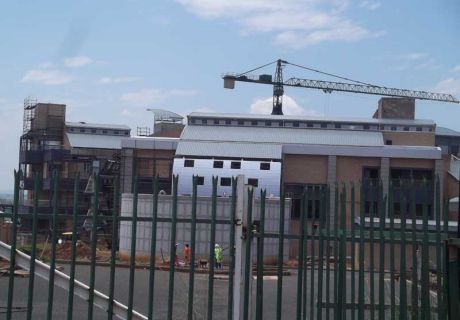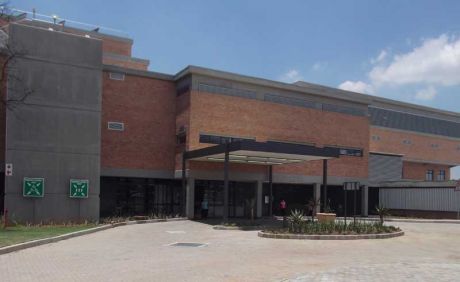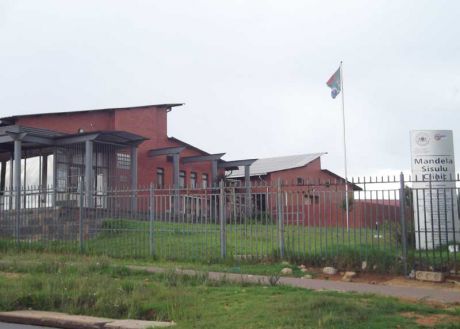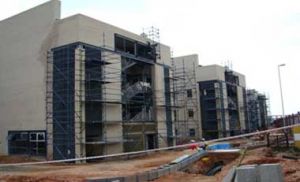Creating opportunities for black professionals
In his investigation, Peter Harris of the Resolve Group focused on a complaint by the former MEC of the Gauteng Department of Public Transport, Roads and Works, Ignatius Jacobs, that I had created parallel structures that co-existed with the department for the delivery of infrastructure projects.
More specifically, MEC Jacobs alleged that I had appointed my friends.
This could not be further from the truth. The structures I put in place were to benefit the people of Gauteng and were necessary interventions to ensure delivery of projects. Besides, the process that was followed to appoint these professionals was open, fair and transparent.
In terms of the Public Finance Management Act, as the accounting officer, I was responsible for all expenditure of the department. One of the disturbing features I inherited was a relative absence of black professionals in the projects implemented by the department. This imbalance was what I sought to correct.
I was appointed HOD for the department on November 8 2004. Upon my appointment, I was confronted by gross under-performance in almost all capex (capital expenditure) projects. My response to this crisis was to introduce Project Management Resource Groups (PMRGs). (It would be presumptuous of me to claim the intellectual property of the concept of PMRGs).
PMRGs are consortiums or clusters of various built-environment professionals – such as construction project managers, architects, town planners, engineers, quantity surveyors etc – who are appointed jointly as a team to provide remedial solutions to unlock blockages associated with under-performance of infrastructure projects.
My introduction of the PMRGs also sought to remedy the absence of black professionals. The PMRGs were a deliberate intervention to create operational space for black professionals, who up to then could only operate as sub-contractors to well-established white firms.
At this juncture it is critical to provide background information on PMRGs. I had first introduced the concept while I was the HOD of the Gauteng Department of Housing. They were called Regional Professional Teams (RPTs) at the time.
I had learned of this model from my travels to various countries – especially Canada, Norway and Germany, where this model is applied in the context of social housing – and adapted it to our Gauteng environment.
It is also my understanding that the RPT model was adopted by most provinces, and that it is more effective than the erstwhile developer-driven model. (The developer-driven model is where private developers and landowners take the initiative – the developers design projects and then apply for subsidies. This led to badly located housing projects that were not linked to any strategic planning or policy – the houses were built where land was available. The RPT model is different in the sense that the department – through the RPT – would plan the location of a housing project and then go and buy or expropriate the land based on this strategic planning processes.)
In 2006, I extended this model to the roads maintenance projects. I therefore had full confidence in the PMRG model and am satisfied that it played a crucial role in turning around the department’s projects.
Showing their worth
Although there were initial teething problems with PMRGs in conforming to a set of checklist requirements, these were resolved, and the PMRGs showed their worth.
The role of the PMRGs was to provide support to existing capacity. The PMRGs were not appointed to replace other consultants and contractors. Clarification of this was critical as some project managers, together with some contractors, were of the view that the new PMRGs were taking over, hence breaking their contracts. This problem was resolved on January 20 2005.
Ongoing interaction with PMRGs, through a monthly forum, allowed them to provide good quality interventions in the period leading to the end of the 2005/06 financial year. This made it possible for the department to extend PMRG involvement in its projects by three years, ending June 2009. (Read performance review)
From the attached reports, it is clear that the PMRGs performed exceptionally well – this was confirmed by independent review as well as feedback from the internal project managers.
For more than two years of the PMRG existence in the department, former MEC Jacobs never raised any objection; on the contrary, he signed in agreement on all the reports that I submitted to the Provincial Executive Council. He only raised these matters after my September 2008 email, to muddy my good name.
Jacobs raised these matters at about the same time the City Press ran a negative campaign, raising doubt about my integrity in the terrain of public opinion. Sadly, Peter Harris failed to apply objective investigative principles. The Resolve Group played along with this politically motivated investigation and fed it the proverbial cannon fodder.
The Press Ombudsman and the South African National Editors’ Forum also refused to enter the terrain and provide some objectivity. I was left alone, in the public eye; I had been painted as a crook who created jobs for pals.
Through this posting, I hope to provide the necessary background and facts for all to see.
Below are some examples of the successes of the PMRGs. In all, the PMRGs delivered 15 hospitals/clinics in Gauteng over a period of three years.
Natalspruit Hospital

The old Natalspruit Hospital in Thokoza was falling apart and was on dangerous dolomitic ground that had developed sinkholes. The PMRG that was assigned to this hospital recommended that the old facility be shut down and a new one be built. A site was found in Vosloorus – the PMRG led the planning process and construction started in 2007. This is an 800-bed facility, about the size Charlotte Maxeke Johannesburg Hospital. Construction is scheduled to be complete in 2013.
Germiston Hospital

This project ran very smoothly. One of the best to be facilitated by the PMRGs. Started in 2008, it was completed and officially opened in 2011 ... sadly MEC Bheki Nkosi found it difficult to acknowledge the good work by the PMRG when he gloated during the opening ceremony.
Mandela Sisulu Clinic

This clinic was built in the 1980s as a temporary structure. It was 100% built with rhino boards, and was falling apart. It is in my township, Orlando West. I decided in 2005 that I needed at least one project in my place of origin, my Kasie. Besides, it had long been renamed Mandela Sisulu Clinic (1994) – these names are too great to be associated with a clinic that was falling apart. I used my powers as the accounting officer, I allocated a budget even when the Health Department had not made a provision. It was promptly demolished and rebuilt from scratch. The PMRG started from land survey and pegging, right through to proclamation, town planning and design.
Chris Hani Baragwanath Out-Patient Department

The interesting thing about this is that it was officially opened three times. President Kgalema Mothlante opened it just before the 2009 elections. President Jacob Zuma opened it just after the 2009 elections. And Minister Aaron Motsoaledi opened it again towards the end of 2009.
All of them attributed the success of this project to public-private partnerships. (PPP). They said it was an example of what can be done if government were to work through the PPPs. They were clearly misinformed. Premier Mokonyane did not tell them that it was the good old Department of Public Transport, Roads and Works, assisted by PMRGs, who delivered on this project. (The above photo is from 2009)